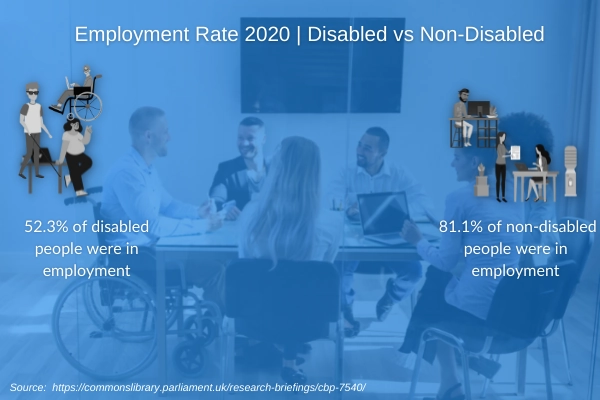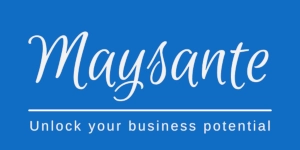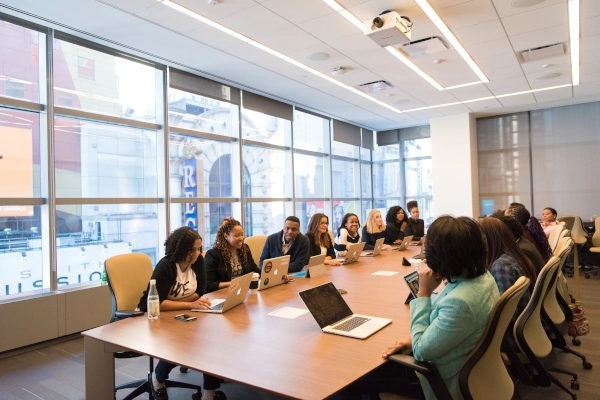There has never been a better time to get diversity and Inclusion right. Recent events around the world have highlighted inequalities that exist in the world. Such events include the pandemic, George Floyd’s death, and the appointment of the first Black woman, Judge Ketanji Brown Jackson to the US Supreme Court. As well as the increase in recent discussions around Trans rights. As a result, there have been protests around the world. People are becoming more aware of the lack of equity. Technology and social media also play key roles in increasing awareness. So, both leadership and employees are placing a lot of importance on diversity and inclusion.
Diversity and Inclusion Initiatives
Creating and maintaining an inclusive workplace is challenging. Most employers now have at least a couple of diversity and Inclusion initiatives. They also have diversity and inclusion champions and will have policies in place. But, in most organisations, diversity and Inclusion is not high enough on the business agenda. There is a need for a leadership champion. It needs to be on the Board’s agenda. There also needs to be a budget for these initiatives. The effectiveness of the initiatives needs continuous evaluation and monitoring.
Remote, Hybrid and Flexible Working
For years, organisations had flexible working and family-friendly policies in place. But in practice, these policies existed mostly just in name. Employees could not take advantage of them. Remote and hybrid working are only offered to a selected few. But all that changed with the pandemic. The survival of most organisations depended on employees working remotely. As a result, the myths around ‘office-based roles’ are now busted. It has been proven that with technology, most roles can be successfully performed remotely.
Women are mostly affected by inflexible working arrangements. They are more likely to have care responsibilities. Thus, women’s careers have unfairly suffered in the past.
Requirements for your employees to come into the office during all their working hours may also have unfairly disadvantaged neurodivergent individuals. The flexibility to work remotely may offer them the ability to work in their optimal environment, making them more productive.
Representation Matters in Diversity and Inclusion
Employers are waking up to the fact that representation matters at all levels in the organisation. Diverse teams are more productive. Diversity gives people hope. Seeing people like them succeed in all roles, at all levels gives them hope that they can do it too. It increases self-confidence, motivation and aspirations. It gives a stronger sense of belonging.
Inclusive Leadership
Inclusive and impactful leadership effects change. When leaders have an interest in diversity and inclusion and are passionate about it, conversations about it become easy, natural and normalised. Your employees will find it easier to discuss any difficulties they may be facing. Or support they may require. They will also be more willing to share with you how best you can support them.
Employees will have a higher level of trust in an inclusive leader. Inclusion is harder. It’s harder because once you have taken positive and the necessary steps to create a diverse workforce, the real work begins. How do you ensure that you include all your employees? How do you get the best out of all your employees? After all, the key benefits of diversity are a bigger talent pool to tap into, and different perspectives.
Diversity and Inclusion are not Tokenism
Some organisations work to quotas. They focus on having X number of employees from ethnic minority groups. Also, Y number of employees with known disabilities. And Z number of employees from the LGBTQ+ community and so on.
Or, they will have one woman on their Board or one Black manager in the entire organisation. Or a few employees from disadvantaged backgrounds.
Checklist exercise, with no real intention of including these individuals in all aspects of the organisation. It’s almost like – ‘You are here, what more do you want?’
Sadly, these are missed opportunities for organisations that fail to engage, develop and make use of their talents.
Conscious and Unconscious Bias
‘You don’t belong here’! Your actions can make people feel like they don’t belong. Biases can lead you to discriminate against someone directly and indirectly. You make a snappy judgement about people’s suitability, even before you give them a chance.
Pay Gap
The most common pay gaps are due to gender, race, and educational background. Also, disability and cultural background. There have been calls for transparency in pay. Gender pay reporting is compulsory for employers with more than 250 employees in the UK. But there is no mandatory reporting on other protected characteristics under the Equality Act.
There is no justification for a pay gap. When two people are doing similar jobs, with similar experiences and qualifications. Pay gaps can be huge.
The professionalisation of Diversity and Inclusion
There has been an increase in the number of diversity and inclusion professionals. Similarly, there has also been an increase in training for dedicated staff. This has resulted in a rise in awareness of diversity and inclusion initiatives. Organisations are starting to incorporate diversity and inclusion into the wider business strategy. Additionally, employers can be recognised against the accreditation standards for inclusive employers. These all contribute to improving knowledge, skills and expertise and giving diversity and inclusion more credibility.
Diversity and Inclusion Help Alleviate Skills Shortage
Diversity and inclusion offer organisations great opportunities to recruit and retain talent. It will also be easier for such organisations to fill vacancies.
For example, in April 2021, it was published that 52.3% of disabled people were in employment, compared to 81.1% of non-disabled people.

Also, employers miss out on talented women, especially when women go on maternity leave. You can be supportive of your employees on maternity leave. And by offering flexible working arrangements, you will be able to benefit from their expertise and experience.
Although the UK unemployment rate was 4.0% in October – December 2021, it was as high as 11% among Black people. There are a lot of talented and qualified Black people who are unemployed. Or in roles that they are overqualified for. Employing such people will give your business a competitive advantage.
Four Generations
There are four generations in the workplace. From Baby Boomers to Gen Z. An inclusive workplace will embrace all the generations. Everyone should also feel welcome, belong and free to express themselves. More importantly, everyone must also be respected.
Each generation can learn from the other. Organisations can benefit from the generations working with each other.
Mental Health and Wellbeing
The pandemic affected different people in different ways. Parents with young children or school-age children had extra pressure. They had to combine work with home education. It is reported that women were more impacted than men.
Other people were put on furlough. Others lost their jobs, and some worried about their job security. Others experienced bereavement. Some did not get to say goodbye to their loved ones due to Covid-19.
Leaders need to show empathy for their staff. You need to offer them support. You must also seek help if you are experiencing high levels of stress, anxiety or depression.
Smarter organisations know that the more diverse and inclusive you are, the more productive you are. And the more profitable you become. Diversity and inclusion, therefore, are essential for your business growth and profitability.

